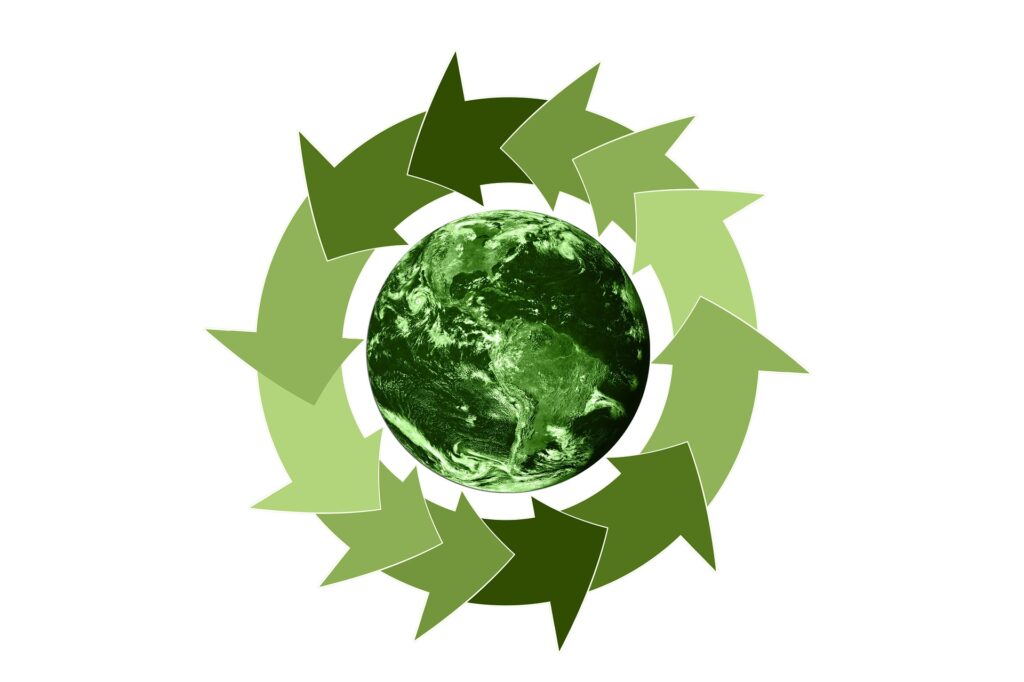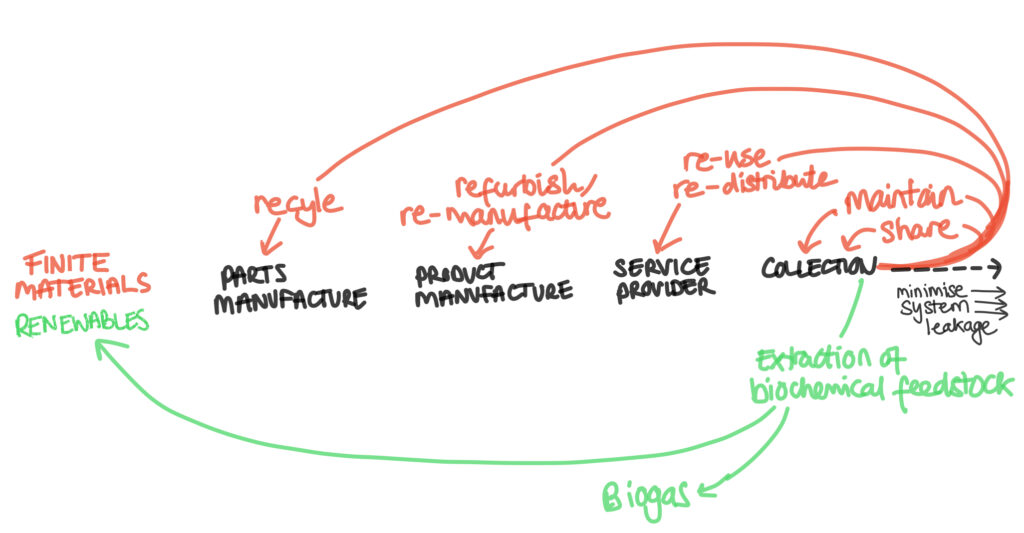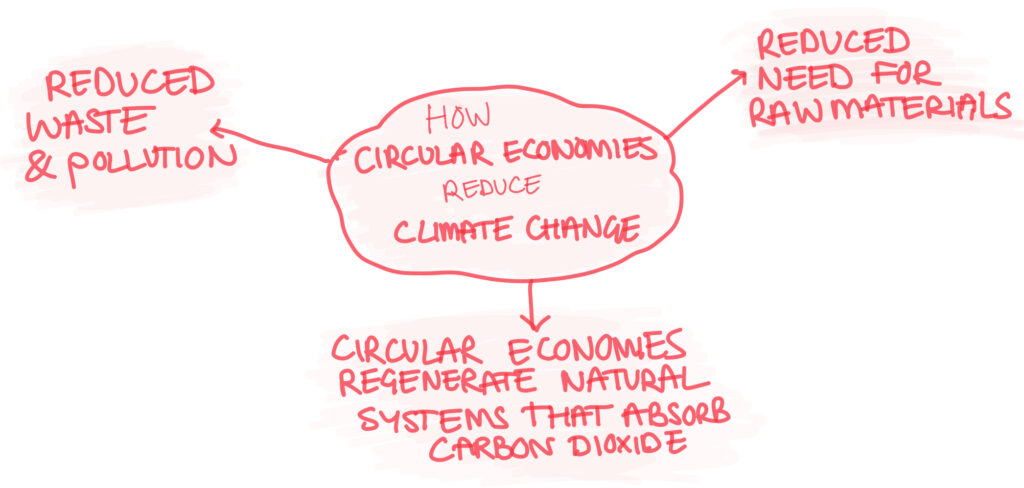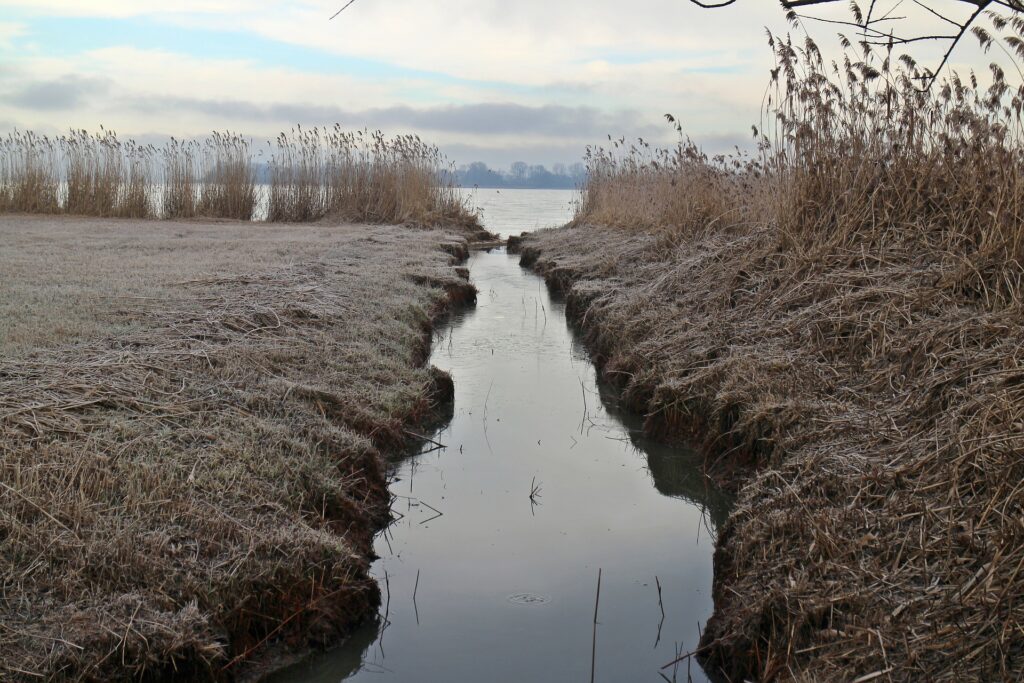This post looks at the circular economy, what it means and how it works. It explores what the links between the circular economy and climate change
What is the circular economy?
The circular economy is a system of material and service use that minimises material extraction and waste and maximises re-use and recycling. The idea is different from the linear economy we use today, where items come from the ground, are made, used, and then returned to the ground (in landfill).

Instead, in circular economics, the manufacture is one part of the life-cycle of an item. The use is another part, followed by repair, re-use, re-manufacture, and recycling the components back into the economy. This leaves space for many other industries that can work in the repair, recycle, collection, re-manufacture spheres, which boost jobs and economic activity while reducing the impact on the planet. In contrast, in a linear economy, economic growth means increased consumption, more products, more manufacture and more waste, pollution and damage to the environment.
How does the circular economy work?
In my opinion, the best way to understand something is by a diagram. I have copied this image from the Ellen Macarthur Foundation, which has excellent circular economy resources, which has excellent circular economy resources. Along the top, you can see all the opportunities for ‘’re-use’, first there’s maintenance, then there are service industries that can provide re-use or redistribution of products. If not, manufacturing industries can alter, reuse or redistribute parts and parts manufacturers that can recycle parts. Each of these cycles (circles of economic value) reduces the need for finite materials and reduces waste.

Circular economy and climate change
How does the circular economy impact climate change? Climate change is the effect of higher greenhouse gasses in the atmosphere, causing global warming, the effects of which lead to dramatic changes in climate. Thus any action to reduce the emissions of greenhouse gases will be good in slowing climate change.
Circular Economies reduce climate change in 3 ways:
- A circular economy reduces waste and pollution
- A circular economy reduces the need for raw materials
- And, circular economies regenerate natural systems that absorb carbon

Circular economies reduce waste and pollution
A circular economy reduces waste and pollution because the way we deal with our rubbish is terrible for the environment. Landfill is compressed underground and in the pressure and heat, and decomposable materials turn into methane, a potent natural gas. Plastics don’t decompose, at least not for thousands of years. But, they do break down into tiny microplastic particles. These are small enough to be washed into underground water systems and out into the sea. These make their way into our water systems and all human activities.
Other waste that does not go into landfill is incinerated, which is terrible. Incineration releases loads of co2 that would otherwise be stored underground. In the case of plastics, they would otherwise remain in sold form, which is not harmful, for thousands of years. Not only is a lot of co2 released during incineration, but plastics do not burn cleanly. This means a range of other pollutants are also released that are harmful to humans. Less waste means less methane from landfills, less CO2 from the waste that gets incinerated, and a lower risk to the climate.
Circular economies reduce the need for raw materials
A circular economy reduces the need for raw materials because when things are reused, recycled and repaired, they remain in our lives for longer. This means we do less ‘throwing out’ and ‘replacing with new stuff’. This means less demand for new stuff. With less demand, the supply can reduce, and we will manufacture less. This saves a lot of emissions from the manufacturing process and the extraction of the raw material and the energy needed in the processes. Similarly, all these processes involve a lot of pollution. Air is polluted with greenhouse gasses, rivers are contaminated with chemicals, and the natural environment is polluted with other chemicals, noise and visual pollution.
Circular economies regenerate natural ecosystems
Ecosystems can survive better and grow when we use fewer natural resources. Any vegetation absorbs carbon dioxide during its growth phase. Also, once it dies and decomposes, vegetation restores carbon and lots of other nutrients into the soil, enabling way more natural growth. Vegetation and trees are significant; they do many things to slow climate change. For example, they slow water flow, which might otherwise cause flash flooding. They also provide cool spaces for animals experiencing the effects of rising temperatures. Mining sites and landfills/waste processing plants prevent these natural actions.

Examples of a circular economy
The circular economy can involve and re-use, re-manufacture or recycling of items. For example, imagine a washing machine. You might buy a washing machine and hope it lasts ten years. In a circular economy, it would get constant servicing to make it last as long as possible. Then when a component broke, the machine would be designed so that each element could be taken out and replaced without needing a whole new machine. That component might then be taken to a repair facility. If it could be repaired, it would go back into the stock kit for other machine repairs. Otherwise, or if part of it needed replacing, the parts could go to a remanufacturing facility where most of the object was re-used, but the very broken bit was replaced. If it’s completely un-fixable, the part will go to a recycling centre.
Because it’s a circular economy, the part would be made from a material that can be recycled without degrading in each recycling cycle. The raw material would be processed; for example, it could be melted down and reformed if it’s a metal. Although that process requires energy (which would have to be renewable), it would not create emissions in a landfill. Nor would that same amount of material need to be extracted from the earth in a heavily energy-intensive process.
Companies that support circular economy actions
Most companies use ‘circular economy’ as a buzzword to mean re-useable or sustainable. Just having one re-useable item is good, but there is no way these corporations are employing proper circular economy systems throughout.
On the one hand, they should get no credit for using a buzzword to do something that makes them sound way better than they are. On the other hand, it’s not perfect, but it’s the start of a trend. The awareness and attention is good. And truthfully, I get excited when I read about things like this because it’s a move in precisely the right direction!
These examples are taken from the World Economic Forum:
- Addidas has a range of footwear called the UltraBoost Loop designed from just one material with no glue used in the manufacture. Instead, they’re assembled at high temperatures, meaning the materials stay pure and can be fully recycled. On the website, Addidas describe them as ‘shoes customers will never own, but instead will return once they are finished with them’
- Burger king have started making reusable packaging. You can pay a small amount for it and get your deposit back when you return the packaging for cleaning and re-use. This covers just one section of the circular economy- and it’s something that has happened already in many places around the world, but it’s a step.
- Ikea no buy and re-sell second-hand furniture. The idea for this is excellent. Of course, a lot of Ikea furniture is not designed to last in the long run. Still, it’s a progressive step for the section of the economy they are targeting.
Conclusions- the circular economy and climate change.
This post explained what the circular economy and explained the impact of the circular economy on climate change. It gave a few examples of companies employing circular economy measures too.
What is the economy? The economic cycle? What do governments do in economic crises? How does the Bank of England control Interest rates? Top three important things to know about the economy Understand economics intuitively

